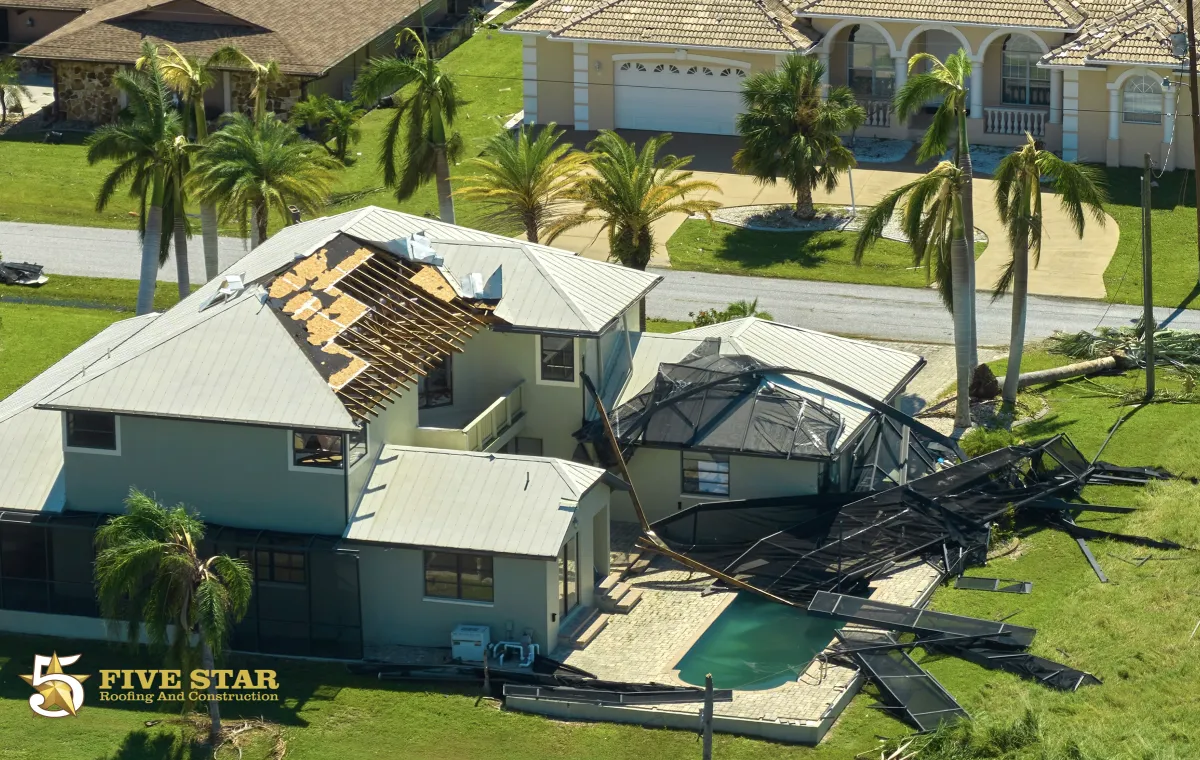
What Are Some of the Delays in Repairing a Damaged Roof After a Storm?
When a storm hits, the damage to your roof can be immediate and alarming. Leaks, missing shingles, and structural damage often require urgent attention to prevent further harm to your home or business. However, despite the urgency, roof repairs after a storm don’t always happen as quickly as homeowners would like. Several factors can cause delays in repairing a damaged roof, ranging from logistical issues to insurance hurdles. Understanding these delays can help you manage expectations and plan accordingly.
Here’s a breakdown of some of the common reasons why repairing a roof after a storm can take longer than expected.
1. High Demand for Roofing Contractors
One of the biggest factors contributing to delays is the sheer volume of demand for roofing contractors following a storm. When a significant weather event occurs, dozens or even hundreds of homes in a single area may suffer roof damage. As a result, roofing companies are often overwhelmed with repair requests.
Limited availability: Many contractors may already have packed schedules and backlogs, especially after a large storm. It may take days or even weeks before a roofer can assess your damage or begin repairs.
Labor shortages: Storms often affect large areas, so contractors may need to pull in additional teams from neighboring areas, which can delay the start of repairs.
Prioritization of severe damage: In the aftermath of a storm, contractors will often prioritize repairs for the most urgent cases, such as those with severe leaks, structural damage, or damage to commercial properties.
2. Insurance Claim Delays
Another common cause of delays in roof repairs is the insurance claim process. After a storm, most homeowners rely on their insurance company to cover the cost of repairs, but the process of filing and approving a claim can be slow.
Claims adjuster scheduling: Insurance companies must send an adjuster to inspect your roof before they approve the claim. Depending on how many claims they’re handling, there may be a long wait for the adjuster to visit your property.
Damage assessment disputes: If there is any disagreement between the roofing contractor and the insurance adjuster about the extent of the damage or the cost of repairs, this can delay the approval of funds. Sometimes, contractors and insurance companies may need to negotiate for a higher payout.
Approval and paperwork: Even after an adjuster has inspected the roof, the paperwork and approval process can take time. Some policies may require additional documentation, like estimates or photos, before the insurance company releases funds for repairs.
3. Availability of Materials and Supplies
Roof repairs, particularly after a widespread storm, often require specific materials like shingles, tiles, or underlayment. Unfortunately, these materials may not always be readily available due to:
Supply chain disruptions: Storms can impact local distributors and suppliers, making it difficult for contractors to get the materials they need. Increased demand for roofing materials after a storm can lead to shortages or delays in delivery.
Material shipping delays: If the storm affected a large geographic area, materials may be delayed in transit. Roofing contractors may need to wait for specific supplies to arrive before they can begin repairs.
Material price hikes: The high demand for roofing materials can also drive up prices, making it more difficult for some homeowners to afford repairs or for contractors to purchase enough material for large jobs. This can lead to a delay as the contractor waits for prices to stabilize or for the homeowner to adjust their budget.
4. Weather Conditions and Safety Concerns
While it may seem counterintuitive, weather conditions themselves can cause delays in roof repairs. Roofers work in sometimes dangerous conditions, especially right after a storm. This can make repairs difficult or impossible for several reasons:
Ongoing rain: Roof repairs require dry conditions for both the safety of the workers and the quality of the work. Rain can delay repairs because it makes the roof slippery and creates risks for workers. It can also prevent the new roofing materials from adhering properly.
Strong winds: Windy conditions can make working on a roof dangerous. High winds can blow debris around, further damage the roof, or create hazardous working conditions for contractors.
Structural damage and safety concerns: If the storm caused significant structural damage to the roof or the building itself, it may not be safe for workers to begin repairs until engineers have assessed the situation. The structural integrity of the building must be ensured before work can proceed.
5. Permits and Inspections
Depending on the scope of the roof damage and local regulations, repairing a roof after a storm may require permits or inspections before work can begin. This can create delays in several ways:
Permit application processing: The permitting process can take time, especially in the aftermath of a large storm when local government offices are inundated with requests. Without the proper permits, roofers cannot legally begin repairs.
Post-repair inspections: Once repairs are completed, a local building inspector may need to verify that the work meets code and safety standards before it’s considered finished. Scheduling and passing these inspections can add extra time to the process.
6. Complex or Extensive Roof Damage
In cases of extreme storm damage—such as the aftermath of a hurricane—roof repairs can be much more complex. This complexity can cause delays for a number of reasons:
Complete roof replacement: If the damage is so extensive that a full roof replacement is necessary, this will take longer than simple repairs. Full replacements require additional labor, more materials, and a longer time frame.
Hidden damage: Storms can cause damage that isn’t immediately visible. Once repairs begin, roofers may discover hidden structural issues, mold, or water damage that need additional work. These unforeseen problems can delay the overall repair timeline.
While the desire to get your roof repaired quickly after a storm is completely understandable, several factors can contribute to delays. From high demand for contractors and insurance claim backlogs to material shortages and weather conditions, many variables can slow down the process. Understanding these challenges can help you manage expectations and ensure that you’re taking the right steps to protect your property as quickly as possible.
Five Star Roofing & Construction is your Central Florida Tampa Roofing Companies and Roof Repair Companies experts in Tampa, Orlando, and cities throughout Florida for years. We are licensed, Bonded, Insured, and experienced. Offering Free Roof Inspections!


